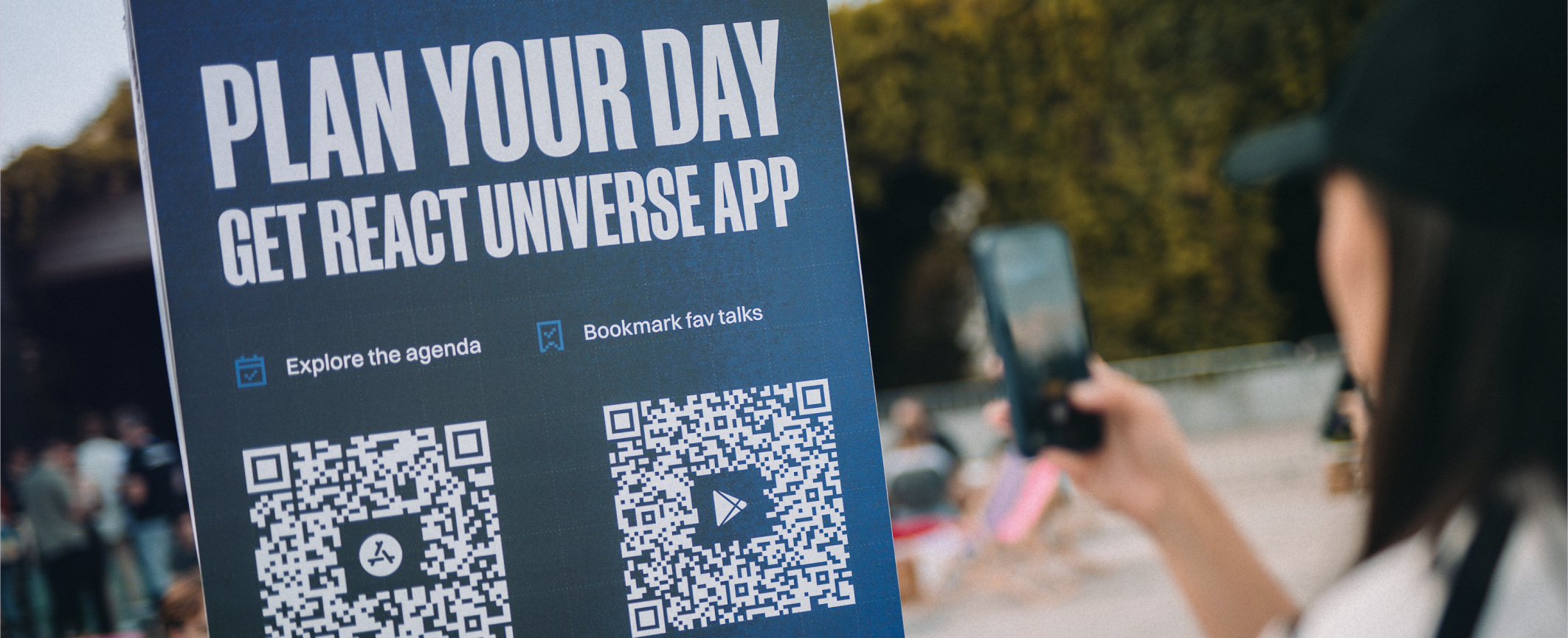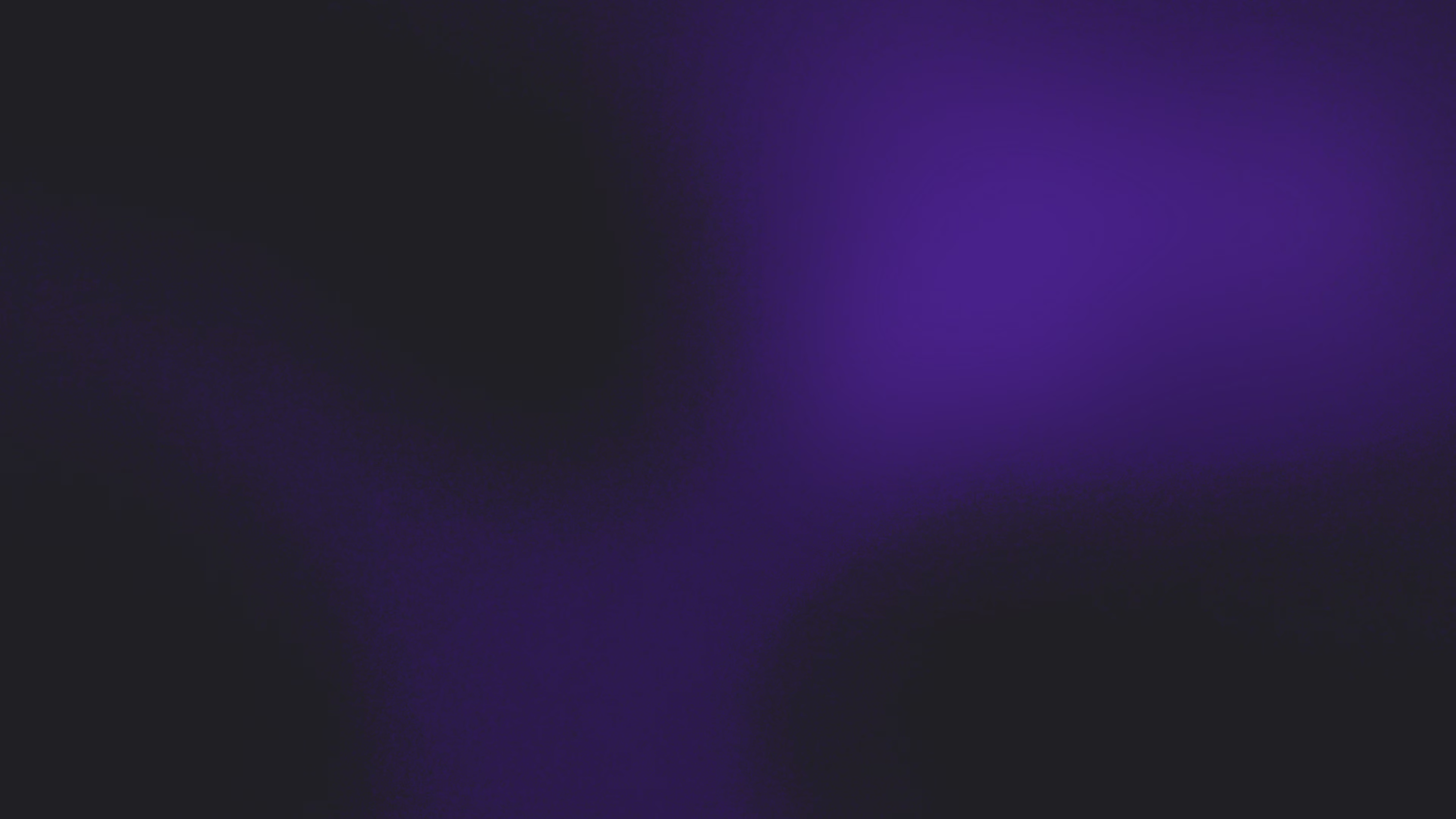React Universe App: Networking evolved with Liquid Glass
A great developer conference is equally about talks and schedules as it is about connecting with people. For our flagship React Universe Conf, Callstack set out to create a digital companion app that went beyond the agenda and made networking effortless.



Beyond the agenda: Building a networking-first event app
Callstack’s React Universe Conf needed more than a simple agenda-focused app. Attendees expected networking, identity, and sponsor visibility, while the brand was being refreshed and Apple had just introduced Liquid Glass on iOS.
The app needed to:
- Deliver a networking-first event app, not “just an agenda."
- Make the app feel like an extension of the Callstack brand to be reused for all future events.
- Balance experimental design (Liquid Glass) with production-ready reliability under tight conference deadlines.
From research to real-time delivery
Research and discovery
We began with interviews across developers, HR, sponsors, and sales teams, creating personas and user journeys to capture how each group would use the app. A competitive analysis revealed that most event apps stopped at the agenda, leaving networking underserved.
Our hypotheses were validated through clickable Figma prototypes, usability tests, and co-creation workshops with organizers and participants. Maze studies confirmed the value of personalized badges, with a 94.7% success rate, most users found sharing interests and goals helpful (62%), and 73% clearly understood required fields.
These results confirmed badges as both intuitive and effective for driving networking. We complemented this with accessibility reviews and navigation validation (Agenda → Networking → Badges), ensuring clarity and inclusivity.
UX / UI
With validated insights, we moved into design and development. Starting from wireframes and user journeys, we built high-fidelity prototypes of each core feature. Because the app was developed in React Native, we adopted an iOS-first design system, creating Android fallbacks for elements that relied on Liquid Glass.
Key features
Navigation
A bottom tab system on iOS featured Liquid Glass effects for a modern feel, while Android used a solid design to ensure consistency and platform optimization. The tab bar also included a smooth animation, hiding on scroll to maximize screen space and reappearing when needed.
Badge creation
Customizable digital badges allowed attendees to showcase socials, goals, and interests.
Agenda
A clear schedule with Day 1/Day 2 tabs, where talks could be bookmarked or added directly to the system calendar for reminders.
Networking
Simple QR code sharing and scanning enabled instant, seamless contact exchange between attendees.
Visual identity
The visual layer was designed to feel like an extension of Callstack’s recently refreshed brand. We used the new color palette and typography, integrated animated illustrations, and designed blurred card components that later evolved into Liquid Glass with the release of iOS 16 and Figma’s glass blur support. Iteration continued during development, with separate iOS and Android designs where needed, and refinements to keep the app future-proof.
Development
The React Universe App was built with a TypeScript-first, React Native stack supported by Supabase as the backend platform. Supabase provided Postgres, Row Level Security, and edge functions, with all database schemas, policies, and email templates version-controlled in Git for safe rollbacks. This ensured strong security and reliability throughout the project.
On the client side, we used TanStack Query for unified data fetching, caching, and mutations, while Expo served as the cross-platform foundation. Thanks to OTA updates, we were able to deliver real-time fixes during the live conference, complemented by nightly App Store and Play Store rollouts for stability. Navigation was powered by Expo Router, and Liquid Glass effects were enabled via expo-liquid-glass-view, with fallbacks for Android devices.
We also built backend functions in TypeScript, lowering the barrier for React Native developers to contribute on both sides of the stack. The team worked in a self-organized model: developers owned tickets, testers were embedded from the start, and communication with project owners was direct and continuous. This culture, combined with a security-first approach, allowed us to ship a stable, scalable, and future-ready application under tight event deadlines.
What was unique about our approach?
- Future-proofed design for Liquid Glass, shipping stable value while preparing a cutting-edge release.
- A research-driven UX process (Maze, workshops, personas) uncommon in many event apps.
- Built not just for one conference but as a scalable Callstack event platform.

Driving engagement beyond the agenda
Need React or React Native
expertise you can count on?
We’ve spent years building full-stack, cross-platform apps and solving tough technical challenges. How can we help you?

How we’ve solved similar challenges
See more examples of how we solve architecture, performance, and scale challenges with tailored React and React Native solutions.

